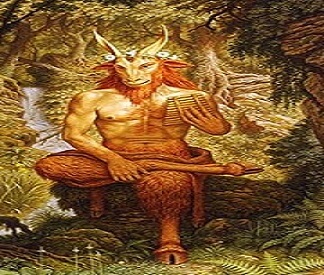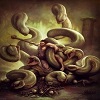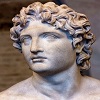Satyr
The divine, half-man and half-goat creatures
Satyrs have goat-like features such as hindquarters and horns and are often depicted playing flutes and holding cups of wine.
They epitomize the essence of having a carefree life as they make music and drink all they want.
Satyrs were male creatures who inhabited woodlands and forests in Greek mythology. They often accompanied Dionysos, and were frequently depicted in art and myth as members of the god's ecstatic entourage (an entourage, by the way, which included not only satyrs but the wild women known as Maenads or Bacchantes).
In addition, the satyrs as a group were passionately fond of females - especially nymphs, those gentle and beautiful nature spirits. But there is much more to these mythical creatures, as we shall learn.
The ancient Greeks saw the satyrs as having some rather distinct attributes. Satyrs appear commonly with the legs of goats. In this respect they resemble the god Pan. Scholars have suggested that these animal attributes are meant to reflect the way in which satyrs embody the wild, uninhibited forces of nature.
And with their lascivious appetites and insatiable lust for female companionship (nymphs were most commonly the objects of their desire), satyrs have earned a reputation for naughtiness that has made them legendary over the centuries.
In both mythology and art, satyrs are sometimes confused with Sileni. Sileni are actually another type of mythological being. They are however are closely related to the satyr in appearance and mannerisms.
It should be mentioned that Sileni sometimes also have the ears and tail of a horse. The two kinds of creatures were primarily distinguished in ancient Greece by their age - satyrs are represented as eternally young and Sileni are usually depicted as older and more mature looking (their behavior, however, was anything but mature). Indeed, the most famous of the Sileni is Silenus. Silenus was a wise, elderly father figure character who according to legend tutored the god Dionysos.
Satyrs were called fauns in Roman mythology.
[1]












